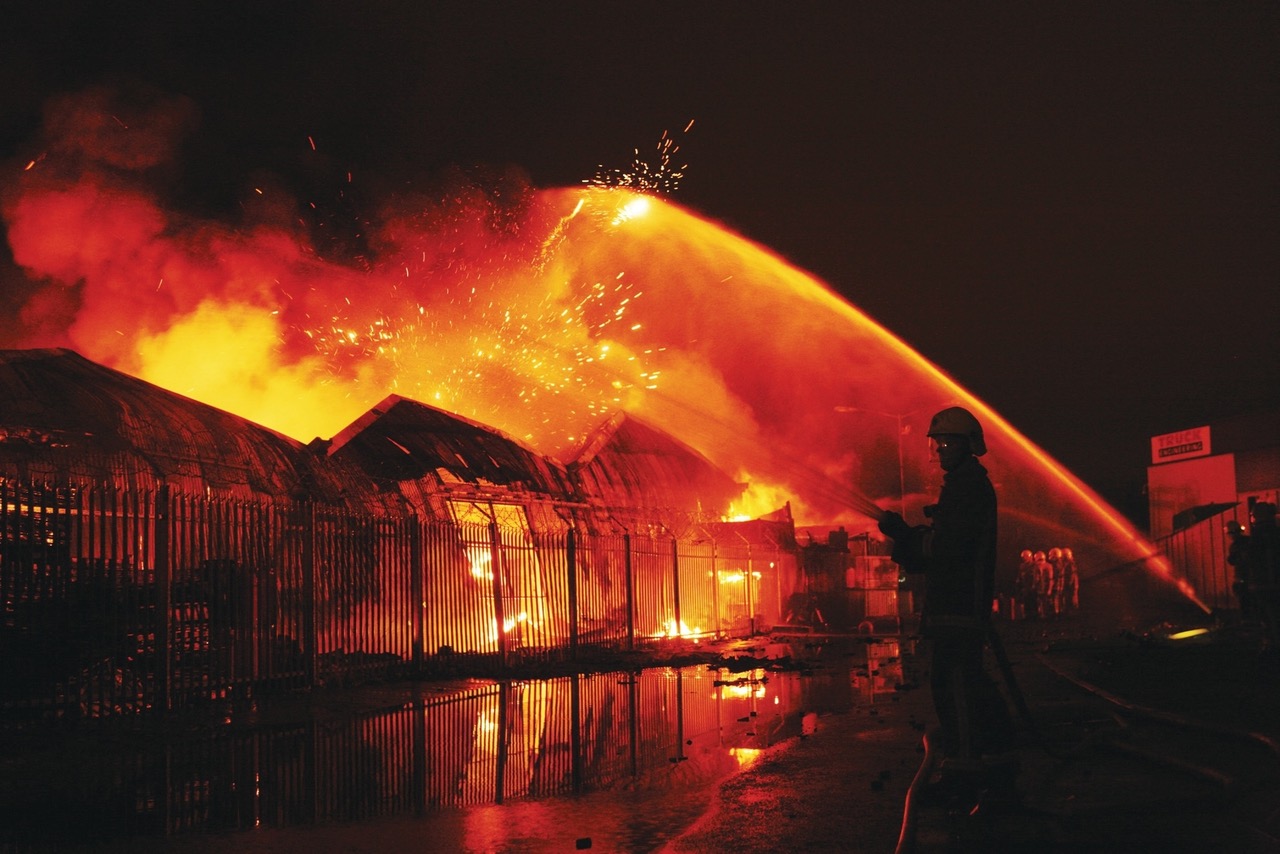

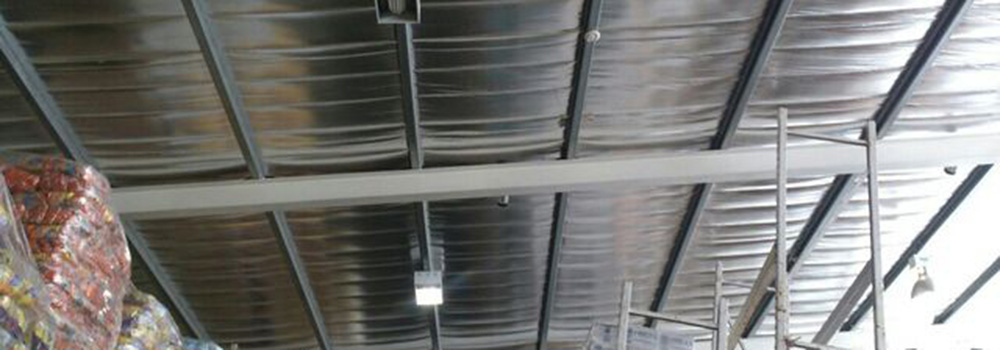
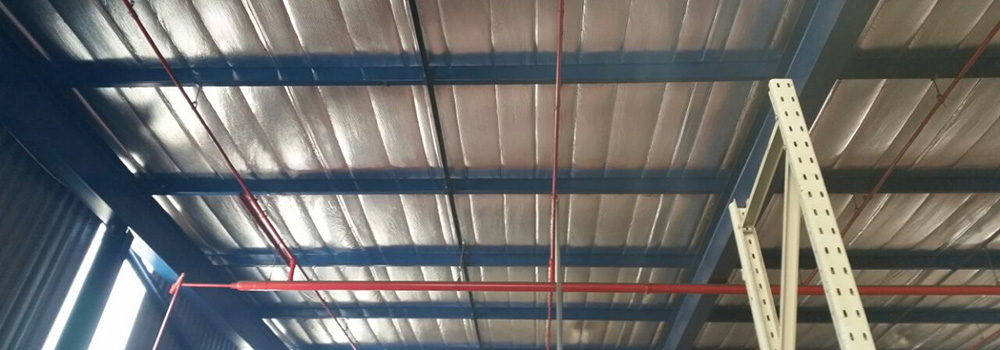
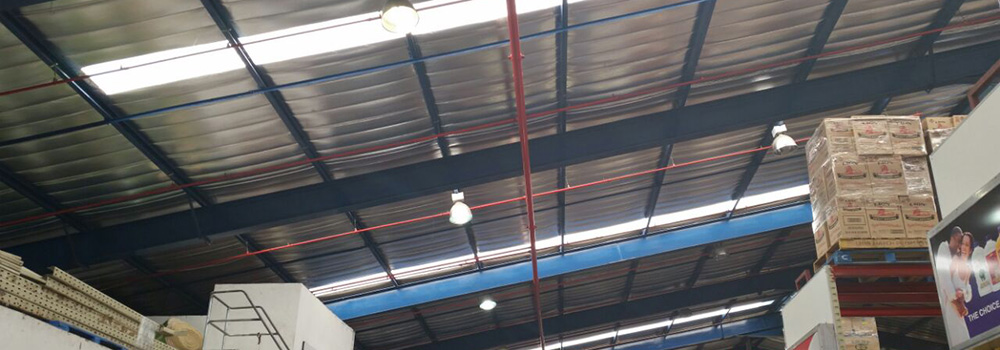
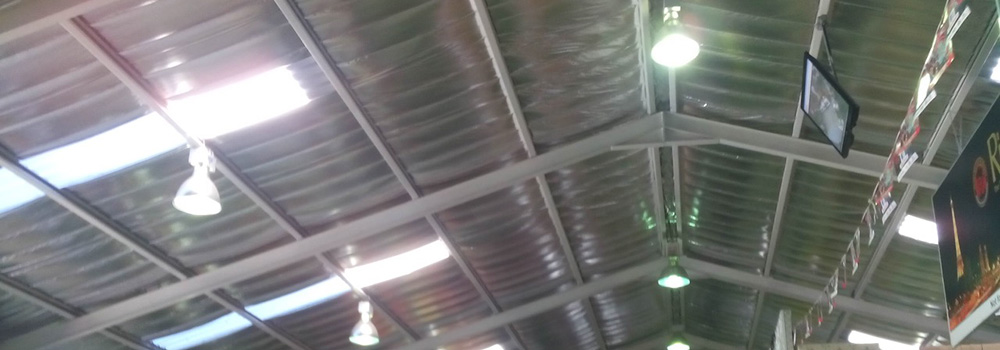


Overview of Replacement of Combustible Roof Insulation
Many of the industrial, commercial and retail buildings that have been constructed over the last 15 – 40 years are still being used, however the requirements for thermal and fire performance have changed since they have been constructed, leaving the building owner with a potential insurance problem, with combustible roof insulation in his building.
Depending on the use of the building and the insurers requirements this existing insulation may need to be be replaced with class Anon-combustible roof insulation.
In the last 2 years, MRC Africa has replaced the combustible roof insulation of over 25 large industry buildings throughout southern Africa, because the existing insulation did not achieve the latest fire requirements, laid out by the building insurer. For most clients or developers this is a major problem, as the building normally cannot be used while these works are being undertaken.
MRC Africa have replaced over 200,000m2 of combustible roof insulation, in the last 3 years and ensured the retail / industrial buildings remain operational whilst the works are undertaken in a clean, timely and safe manner.
Key Features of Replacement of Combustible Roof Insulation
- The works are undertaken in bays so the whole roof is not exposed to the elements
- Replace combustible roof insulation with class A1 non-combustible
- The building remains operational whilst the works are undertaken
- Existing roof sheeting can be re-installed or replaced depending on its condition
- Over-roofing option provides a dramatic improvement in thermal performance
- Opportunity to increase the amount of daylight into the building with additional roof lights
- All works undertaken with the option of Guardian™ Maintenance
Applications for the Replacement of Combustible Roof Insulation
According to the General Requirements of the South African National Building Regulations SANS 10400 Part T: Fire Protection any building shall be so designed, constructed and equipped that in case of fire.
Buildings constructed before 2001 had to comply with SABS 0177 Part 3 Surface fire index of wall finishing materials. Fire experts considered that the surface fire classifications given by SANS 10177 Part 3 were not reliable, as a small scale test doesn’t deal with the capacity of the material to stay in place during a fire and does not indicate the fire safety performance of insulation products. In the fire engineering discipline large scale testing is considered as the ultimate method to assess structures and materials in respect of their fire properties. Certain insulation products have been improperly rated by previous test methods, and when tested in accordance to the new test methods show high indices of flame spread.
This has lead to the requirements of replacing the combustible insulation with class A non-combustible insulation in the roof.
- Industrial applications such as Workshops, Factories, Food Processing Facilities and Automobile Assembly Property.
- Commercial and Retail space such as Shopping Malls and Offices.
- Governmental, Educational, Prison & Transportation Property such as Airports, Schools, Universities, Train Stations and High Security Property.
Technical Data regarding the Replacement of Combustible Roof Insulation
Straining Wire Insulation Support System
- Existing 1.6mm galvanised or coated steel wire to be checked that is has been perpendicularly secured to the purlins at between 300 – 400mm centres or replaced if necessary
Faced Bulk Density Insulation
- Full range of insulation types & thicknesses available
- Facings include silver foil, white & black
- Fire Classification Class A1 (non-combustible)
- Insulation to be stapled as per manufacturer’s details
Metal Roof Systems
- All exposed fixings for the ‘Pierced Fix’ metal roof system replaced with class 4 fixings for longevity
- A minimum of 30% of existing clips replaced for the ‘Concealed Fix’ metal roof system to ensure good engagement depending on the age and condition of the roof system
- Metal perimeter flashings to be sealed against water ingress or replaced for the longevity of the roof system
- Gutters are cleaned from debris
Daylight Roof Solutions
- Increase the amount of daylight into the building with GRP roof lights providing a safer, long term and energy saving daylight solution
Safe Installation
- The roof sheeting and existing insulation is removed in bays with the MRC Warden on the floor below, cordoning off the area and cleaning any loose debris from above
- All our works are undertaken in strict accordance with MRC Health & Safety procedures, industry standard methods giving all due care and attention to the weather conditions
Combustible Roof Insulation Replacement Warranty
- Up to 20 year, single source Guardian™ Maintenance ensuring the longevity of the roof system, insulation, gutters and metal flashings
Guarantees & Warranties of Combustible Roof Insulation Replacement
MRC Africa’s up to 20 year ‘Guardian’ System Warranty cuts through the myth & mystic of product guarantees and workmanship warranties issued by the construction industry.
Traditionally a product guarantee would be issued by the manufacturer and the workmanship warranty would be issued by the installer of the roof system. Two separate pieces of paper, with differing length of terms and when put alongside each other, never answered the question of who will pay for the materials and works such the over-roofing system fail.
‘Guardian’ System Warranty is an unrivalled new era of warranty that covers Materials, Workmanship & Maintenance. The length of term for each element matches and is issued as a single source, transferrable warranty for the life of the guarantee of the compressed insulated metal roof system.
MRC Africa challenges the construction industry to ensure that the workmanship warranty issued by contractors matches the length of term of the supplied insulation system, thereby ensuring high quality installations.
